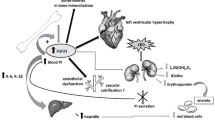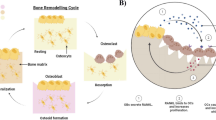Abstract
Osteoblasts and osteoclasts play essential and opposite roles in maintaining bone homeostasis. Osteoblasts fill cavities excavated by osteoclasts. The mevalonate pathway provides essential prenyl pyrophosphates for the activities of GTPases that promote differentiation of osteoclasts but suppress that of osteoblasts. Preclinical and clinical studies suggest that mevalonate suppressors such as statins increase bone mineral density and reduce risk of bone fracture. Tocotrienols down-regulate 3-hydroxy-3-methylglutaryl coenzyme A (HMG CoA) reductase, the rate-limiting enzyme in the mevalonate pathway. In vivo studies have shown the bone-protective activity of tocotrienols. We hypothesize that d-δ-tocotrienol, a mevalonate suppressor, induces differentiation of murine MC3T3-E1 preosteoblasts. Alizarin staining showed that d-δ-tocotrienol (0–25 μmol/L) induced mineralized nodule formation in a concentration-dependent manner in MC3T3-E1 preosteoblasts. d-δ-Tocotrienol (0–25 μmol/L), but not d-α-tocopherol (25 μmol/L), significantly induced alkaline phosphatase activity, an indicator of preosteoblast differentiation. The expression of differentiation marker genes including BMP-2 and VEGFα was stimulated dose dependently by d-δ-tocotrienol (0–25 μmol/L). Concomitantly, Western blot analysis showed that d-δ-tocotrienol down-regulated HMG CoA reductase. d-δ-Tocotrienol (0–25 μmol/L) had no impact on the viability of MC3T3-E1 preosteoblasts following 48-h incubation, suggesting lack of cytotoxicity at these doses. Tocotrienols and other mevalonate suppressors have potential in maintaining bone health.







Similar content being viewed by others
Abbreviations
- GPDH:
-
Glycerol-3-phosphate dehydrogenase
- HMG CoA:
-
3-Hydroxy-3-methylglutaryl coenzyme A
- ALP:
-
Alkaline phosphatase
- GTPase:
-
Small guanosine triphosphate-binding protein
- BMP:
-
Bone morphogenetic protein
- VEGF:
-
Vascular endothelial growth factor
References
Seeman E, Delmas PD (2006) Bone quality—the material and structural basis of bone strength and fragility. N Engl J Med 354(21):2250–2261
Ducy P, Schinke T, Karsenty G (2000) The osteoblast: a sophisticated fibroblast under central surveillance. Science 289(5484):1501–1504
Teitelbaum SL (2000) Bone resorption by osteoclasts. Science 289(5484):1504–1508
Kennel KA, Drake MT (2009) Adverse effects of bisphosphonates: implications for osteoporosis management. Mayo Clin Proc 84(7):632–637
NIH Osteoporosis and Related Bone Diseases-National Resource Center Osteoporosis in Men. https://www.bones.nih.gov/health-info/bone/osteoporosis/men. Accessed 12 Mar 2019
National Osteoporosis Foundation (2019) Bone basics. Accessed 26 May 2019
U.S. Department of Health and Human Services (2004) Bone health and osteoporosis: a report of the surgeon general. U.S. Department of Health and Human Services, Office of the Surgeon General, Rockville, MD
Parker RA, Pearce BC, Clark RW, Gordon DA, Wright JJ (1993) Tocotrienols regulate cholesterol production in mammalian cells by post-transcriptional suppression of 3-hydroxy-3-methylglutaryl-coenzyme a reductase. J Biol Chem 1993(268):11230–11238
Luckman SP, Hughes DE, Coxon FP, Graham R, Russell G, Rogers MJ (1998) Nitrogen-containing bisphosphonates inhibit the mevalonate pathway and prevent post-translational prenylation of GTP-binding proteins, including ras. J Bone Miner Res 13(4):581–589
Wan Hasan WN, Abd Ghafar N, Chin KY, Ima-Nirwana S (2018) Annatto-derived tocotrienol stimulates osteogenic activity in preosteoblastic MC3T3-E1 cells: a temporal sequential study. Drug Des Dev Ther 12:1715–1726. https://doi.org/10.2147/dddt.s168935
Kim YJ, Lee MH, Wozney JM, Cho JY, Ryoo HM (2004) Bone morphogenetic protein-2-induced alkaline phosphatase expression is stimulated by Dlx5 and repressed by Msx2. J Biol Chem 279(49):50773–50780
Aubin JE (2001) Regulation of osteoblast formation and function. Rev Endocr Metab Disord 2(1):81–94
Mo H, Elson CE (2004) Studies of the isoprenoid-mediated inhibition of mevalonate synthesis applied to cancer chemotherapy and chemoprevention. Exp Biol Med 229(7):567–585
Rothman SS (2002) Lessons from the living cell: the limits of reductionism. McGraw-Hill, New York
Mackie PS, Fisher JL, Zhou H, Choong PF (2001) Bisphosphonates regulate cell growth and gene expression in the UMR 106-01 clonal rat osteosarcoma cell line. Br J Cancer 84(7):951–958
Sen CK, Khanna S, Roy S (2007) Tocotrienols in health and disease: the other half of the natural vitamin E family. Mol Aspects Med 28(5–6):692–728
Hussein D, Mo H (2009) d-delta-tocotrienol-mediated suppression of the proliferation of human PANC-1, MIA PaCa-2, and BxPC-3 pancreatic carcinoma cells. Pancreas 38(4):e124–e136. https://doi.org/10.1097/mpa.0b013e3181a20f9c
Burger WC, Qureshi AA, Prentice N, Elson CE (1982) Effects of different fractions of the barley kernel on the hepatic lipid metabolism of chickens. Lipids 17(12):956–963
Burger WC, Qureshi AA, Din ZZ, Abuirmeileh N, Elson CE (1984) Suppression of cholesterol biosynthesis by constituents of barley kernel. Atherosclerosis 51(1):75–87
Radzi N, Ismail N, Alias E (2018) Tocotrienols regulate bone loss through suppression on osteoclast differentiation and activity: a systematic review. Curr Drug Targ 19(9):1095–1107. https://doi.org/10.2174/1389450119666180207092539
Qureshi AA, Pearce BC, Nor RM, Gapor A, Peterson DM, Elson CE (1996) Dietary α-tocopherol attenuates the impact of γ-tocotrienol on hepatic 3-hydroxy-3-methylglutaryl coenzyme A reductase activity in chickens. J Nutr 126(2):389–394. https://doi.org/10.1093/jn/126.2.389
Qureshi AA, Mangels WR, Din ZZ, Elson CE (1988) Inhibition of hepatic mevalonate biosynthesis by the monoterpene, d-limonene. J Agric Food Chem 36(6):1220–1224
Shah AK (2014) The stimulatory impact of d-delta-tocotrienol on the differentiation of murine MC3T3-E1 preosteoblasts. Dissertation, Texas Woman’s University
Wong SK, Mohamad NV, Ibrahim N, Chin KY, Shuid AN, Ima-Nirwana S (2019) The molecular mechanism of vitamin E as a bone-protecting agent: a review on current evidence. Int J Mol Sci 20(6):1453. https://doi.org/10.3390/ijms20061453
Yeganehjoo H, DeBose-Boyd R, McFarlin BK, Mo H (2017) Synergistic impact of d-δ-tocotrienol and geranylgeraniol on the growth and HMG CoA reductase of human DU145 prostate carcinoma cells. Nutr Cancer 69(4):682–691. https://doi.org/10.1080/01635581.2017.1299876
Garrett IR, Gutierrez G, Mundy GR (2001) Statins and bone formation. Curr Pharm Des 7(8):715–736
Ohnaka K, Shimoda S, Nawata H, Shimokawa H, Kaibuchi K, Iwamoto Y, Takayanagi R (2001) Pitavastatin enhanced BMP-2 and osteocalcin expression by inhibition of rho-associated kinase in human osteoblasts. Biochem Biophys Res Commun 287(2):337–342
Leem K, Park S, Lee D, Kim H (2002) Lovastatin increases longitudinal bone growth and bone morphogenetic protein-2 levels in the growth plate of sprague-dawley rats. Eur J Pediatr 161(7):406–407
Song C, Guo Z, Ma Q, Chen Z, Liu Z, Jia H, Dang G (2003) Simvastatin induces osteoblastic differentiation and inhibits adipocytic differentiation in mouse bone marrow stromal cells. Biochem Biophys Res Commun 308(3):458–462
Sugiyama M, Kodama T, Konishi K, Abe K, Asami S, Oikawa S (2000) Compactin and simvastatin, but not pravastatin, induce bone morphogenetic protein-2 in human osteosarcoma cells. Biochem Biophys Res Commun 271(3):688–692
Maeda T, Kawane T, Horiuchi N (2003) Statins augment vascular endothelial growth factor expression in osteoblastic cells via inhibition of protein prenylation. Endocrinology 144(2):681–692
Staal A, Frith JC, French MH, Swartz J, Güngör T, Harrity TW, Feyen JH (2003) The ability of statins to inhibit bone resorption is directly related to their inhibitory effect on HMG-CoA reductase activity. J Bone Miner Res 18(1):88–96
Maeda T, Matsunuma A, Kawane T, Horiuchi N (2001) Simvastatin promotes osteoblast differentiation and mineralization in MC3T3-E1 cells. Biochem Biophys Res Commun 280(3):874–877
Zhang FL, Casey PJ (1996) Protein prenylation: molecular mechanisms and functional consequences. Annu Rev Biochem 65:241–269
Yachnin S, Toub DB, Mannickarottu V (1984) Divergence in cholesterol biosynthetic rates and 3-hydroxy-3-methylglutaryl-CoA reductase activity as a consequence of granulocyte versus monocyte-macrophage differentiation in HL-60 cells. Proc Natl Acad Sci USA 81(3):894–897. https://doi.org/10.1073/pnas.81.3.894
Coxon FP, Ebetino FH, Mules EH, Seabra MC, McKenna CE, Rogers MJ (2005) Phosphonocarboxylate inhibitors of rab geranylgeranyl transferase disrupt the prenylation and membrane localization of rab proteins in osteoclasts in vitro and in vivo. Bone 37(3):349–358
Hunter-Cevera JC, Belt A (1996) Maintaining cultures for biotechnology and industry. Elsevier, Amsterdam
Chin KY, Abdul-Majeed S, Mohamed N, Ima-Nirwana S (2017) The effects of tocotrienol and lovastatin co-supplementation on bone dynamic histomorphometry and bone morphogenetic protein-2 expression in rats with estrogen deficiency. Nutrients 9(2):143. https://doi.org/10.3390/nu9020143
Jadhav SB, Jain GK (2006) Statins and osteoporosis: new role for old drugs. J Pharm Pharmacol 58:3–18
Woo JT, Yonezawa T, Cha BY, Teruya T, Nagai K (2008) Pharmacological topics of bone metabolism: antiresorptive microbial compounds that inhibit osteoclast differentiation, function and survival. J Pharmacol Sci 106:547–554
Ahn KS, Sethi G, Chaturvedi MM, Aggarwal BB (2008) Simvastatin, 3-hydroxy-3-methylglutaryl coenzyme A reductase inhibitor, suppresses osteoclastogenesis induced by receptor activator of nuclear factor-κB ligand through modulation of NF-κB pathway. Int J Cancer 123:1733–1740
Mundy G, Garrett R, Harris S, Chan J, Chen D et al (1999) Stimulation of bone formation in vitro and in rodents by statins. Science 286:1946–1949
Mo H, Yeganehjoo H, Shah A, Mo WK, Soelaiman IN, Shen C-L (2012) Mevalonate-suppressive dietary isoprenoids for bone health. J Nutr Biochem 23(12):1543–1551
Weivoda MM, Hohl RJ (2011) The effects of direct inhibition of geranylgeranyl pyrophosphate synthase on osteoblast differentiation. J Cell Biochem 112:1506–1513. https://doi.org/10.1002/jcb.23087
Acknowledgements
We thank Dr Jay Cao from USDA for providing technical assistance in the culture of MC3T3-E1 cells.
Funding
This work was partially supported by the Agriculture and Food Research Initiative Grant 2009-02941 from the USDA National Institute for Food and Agriculture, Texas Department of Agriculture Food and Fiber Research Program, and Texas Woman’s University Research Enhancement Program.
Author information
Authors and Affiliations
Corresponding author
Ethics declarations
Conflict of interest
The authors declare that they have no conflict of interest.
Additional information
Publisher's Note
Springer Nature remains neutral with regard to jurisdictional claims in published maps and institutional affiliations.
Rights and permissions
About this article
Cite this article
Shah, A.K., Yeganehjoo, H. The stimulatory impact of d-δ-Tocotrienol on the differentiation of murine MC3T3-E1 preosteoblasts. Mol Cell Biochem 462, 173–183 (2019). https://doi.org/10.1007/s11010-019-03620-w
Received:
Accepted:
Published:
Issue Date:
DOI: https://doi.org/10.1007/s11010-019-03620-w




